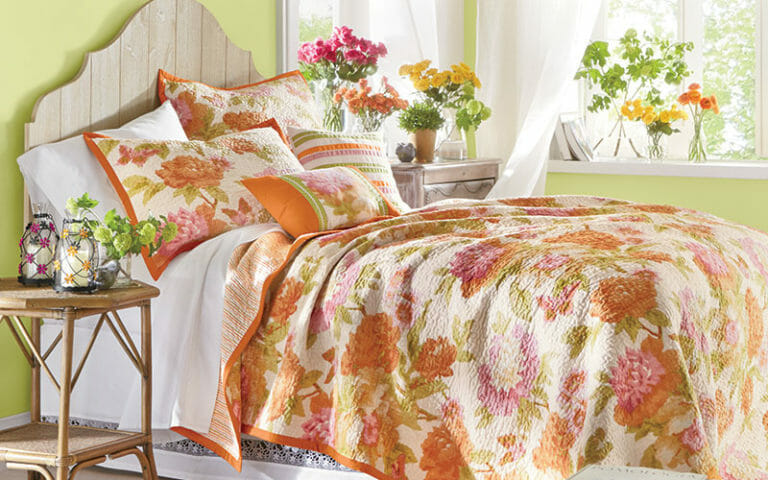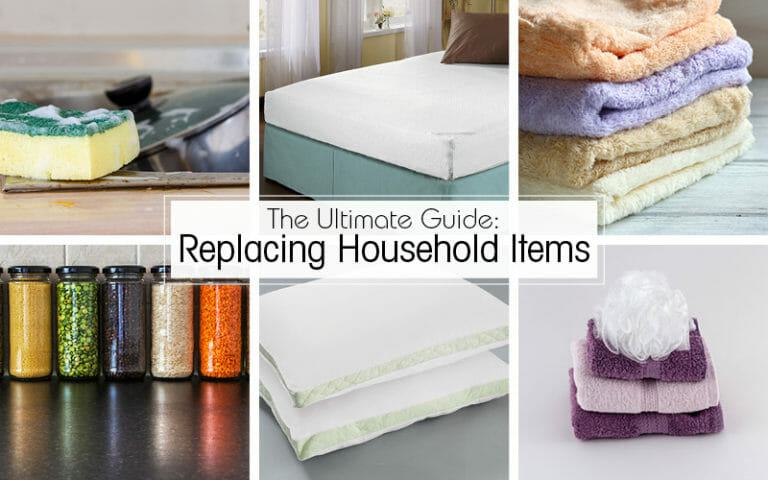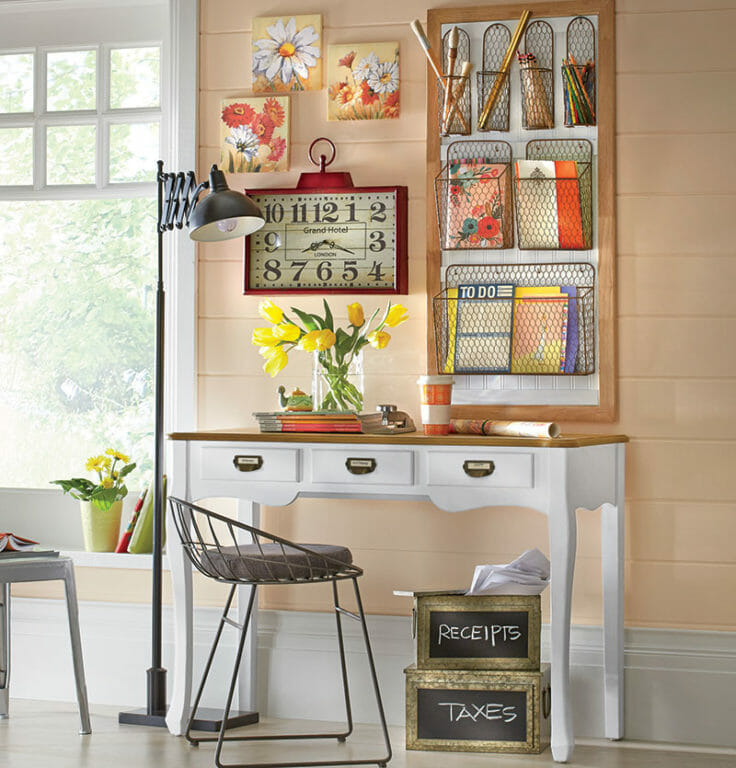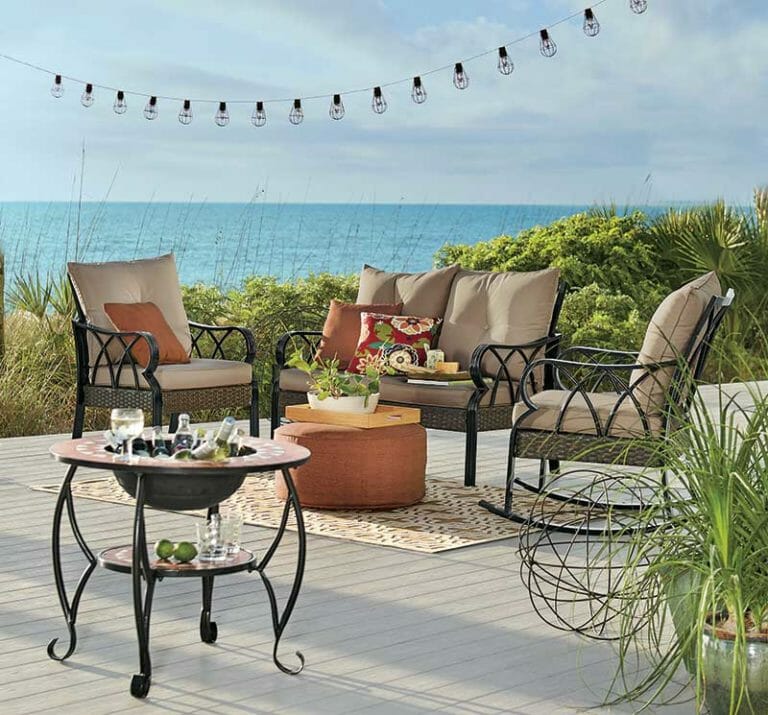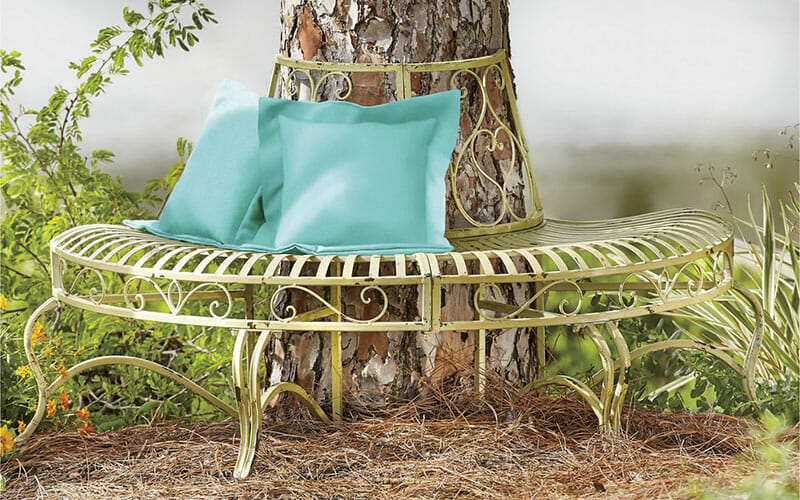
Garden Decor Ideas
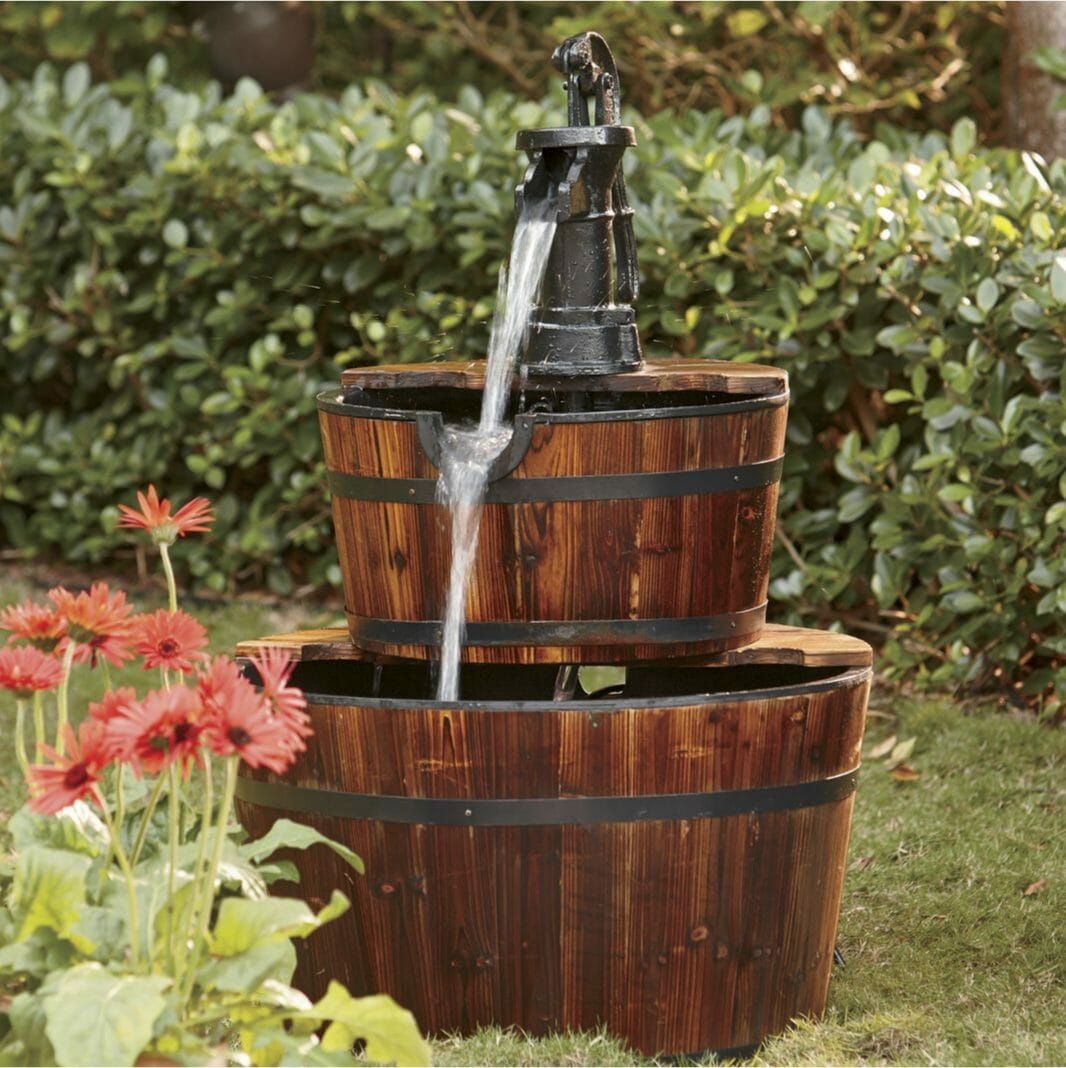
Fresh Ideas for Decorating Your Yard & Garden
Don’t let your garden’s plants and flowers have all the fun. Add your own decorative touch with some of these diy garden decorating ideas for inspiration. So often we think that our home decorating ends at the front door, patio, or porch. But in fact, there are so many opportunities to transform your outdoor garden into a beautiful serene space that is uniquely yours.
Mother Nature does a grand job providing blooms and greenery, but there is always room for a little improvement with the addition of whimsical décor and inspiring garden accents. Make your outdoor retreat uniquely yours with just a few key pieces and diy garden projects. Here are some ideas for how to decorate your garden & yard.
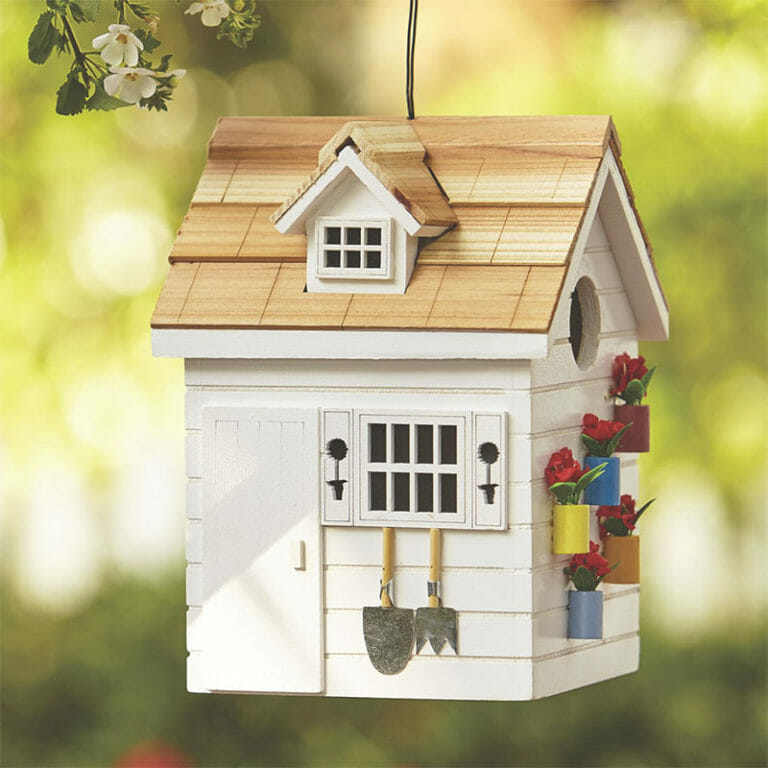
Yard Ornament Ideas
Every season offers opportunities to decorate for the holidays with lawn and garden décor that will carry the celebration outside. In the summertime, look for patriotic flags and outdoor lanterns that can line pathways and add a special touch to your yard and garden. Is this the year that you will upgrade your home’s address sign at the front of your yard? And don’t forget to scout out the perfect locale for an adorable birdhouse that you can keep an eye on from a nearby window.
Outdoor Plaques and Signs
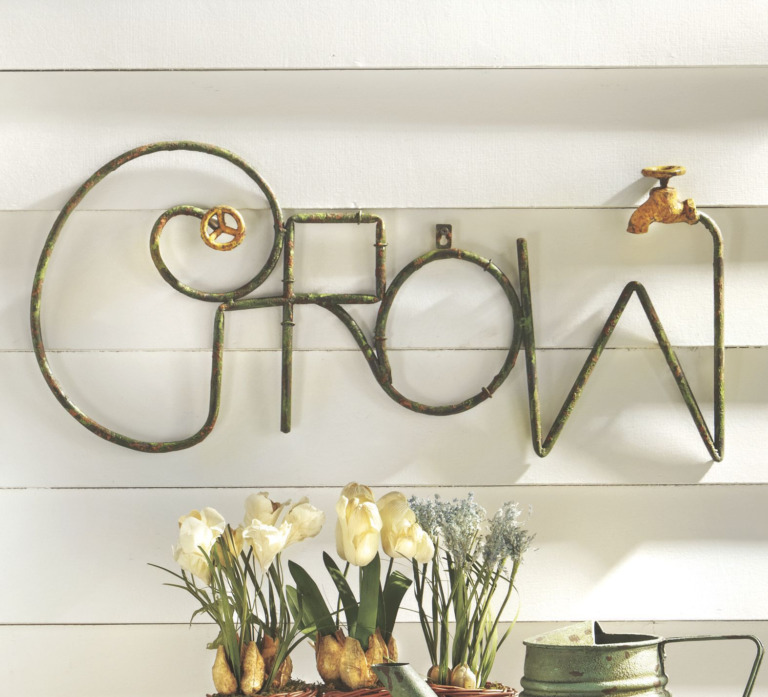
Share Outdoor Inspiration
Your patio or deck area might not be the first place where you think about decorating the walls, but chances are there is some prime wall real estate that could benefit from outdoor plaques or inspirational signs. From garden-worthy proclamations to grow and thrive, to pretty prints of poppies to shabby chic screen doors, there are lots of creative options to add personality to your outdoor space.

Decorative Garden Statues
When it comes to outdoor accents, a garden statue can be a lovely addition. Arrange a few small ceramic animal statues, such as birds, a pair of bunnies, or a fox throughout your garden. Or, go for something more prominent, like a roman goddess or an angel to watch over your blooms. Of course, you can always opt for a garden silhouette that is more playful and colorful too – it’s all a reflection of your personal style!
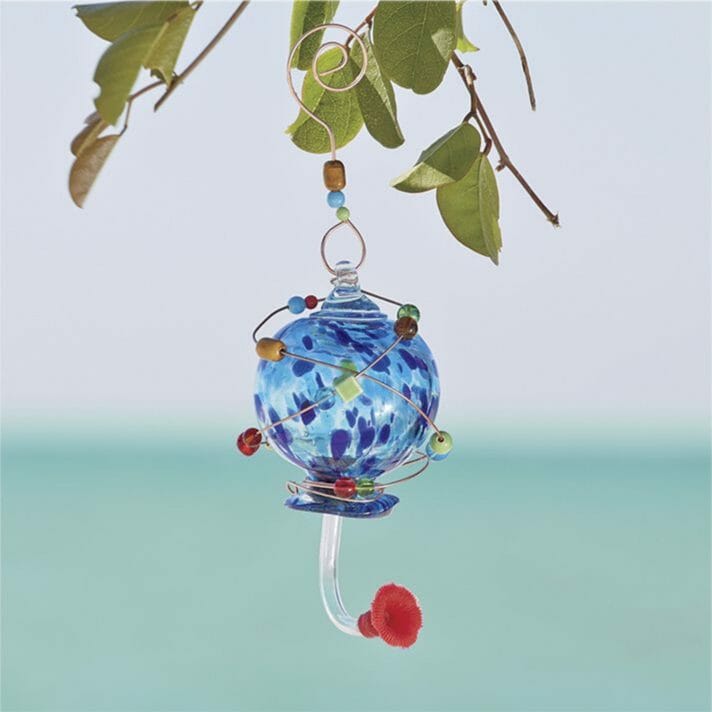
Watch Nature in Action
When it’s entertainment you seek, a hummingbird feeder can deliver hours of fast-moving bird watching. Hang one on your patio or in front of a picture window and fill it with sugar water, then sit back and enjoy the comings and goings of nature’s smallest winged performers.

Garden Seating
What good is a garden if you don’t give yourself a chance to spend some time and enjoy it? There is nothing more inviting than finding a nice place to stop and contemplate nature’s beauty.
Arrange a small table and two chairs in some shade, place a round tree bench around a prominent tree, or hang a comfy swing from a strategic branch where you can while away the summer days. Have a few outdoor accents such as throw pillows on hand so you can get comfortable and hang a lovely wind chime nearby to enjoy its beauty and its song. You are ready to host a good friend to sip lemonade and sit awhile.
While adding a fire pit to a backyard garden, it is a great way to enjoy your garden areas after the sun goes down. Place a few seats and string lights for a special evening ambiance.
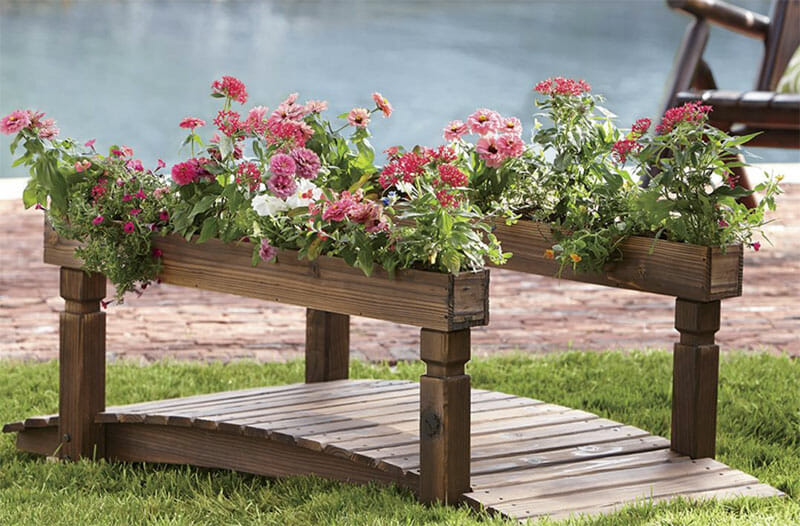
Flower Bed Decorating Ideas
After you’ve planted your flowers and mulched your garden beds, you may be looking to add a little something more decor to your garden design. Think about how you can add a level or two of visual interest. Add a whiskey barrel and fill with another set of blooms. Place an old distressed wooden stepladder toward the back of your garden and add pots of flowers or a birdhouse to each step. Add wind spinners or an English garden orb for color and movement. Don’t forget to add accent pieces above eye level. Hanging flower baskets filled with arrangements of your favorite blooms will add garden appeal and color while drawing the eye upward. String lights along your garden path will light your way after dark. There are so many possibilities!
Want to get the kids involved with flower bed decorating? Try helping them make their own personalized garden stepping stones with our directions.
Spring Prep
It never too early to begin thinking about your spring garden. In fact, there are many things you can do now to get things ready for when Mother Nature brings warmer weather and spring showers.
Winter is the best time to prune many trees and shrubs, before new growth and warm weather can increase the risk of disease. Check your trees and plants for any winter damage, such as heavy snows that may have broken limbs, and clear out dead branches now. Prune fruit trees and grapes in late February/early March after much of the winter cold has passed.
Order seeds early. Peruse seed catalogs, plan out your garden on paper and place your seed orders now. It can take weeks for your seeds to arrive and once they do, you might want to get a leg up on the growing season and start your seeds indoors about 6-8 weeks ahead of the frost-free date in your zone.
Think ahead to what kind of outdoor garden décor, such as birdbaths, planters or garden statues and take advantage of the best selection and early spring sales. Before you get ahead of yourself, be sure to know what the right planting time is for your neck of the woods. Find out when the last frost date is for your area and plan your gardening accordingly. There are many online sites that provide general zone information. Or check with your local gardening clubs for their take on the perfect timeframe to start digging in.
For good reason, compost has earned the title of superfood of plants. Get a compost bin and start now to turn food scraps, leaves and coffee grounds into a nutrient-rich fertilizer that will supercharge your garden this spring. You’ll be glad later on that you took time to get your soil ready now. As the ground begins to thaw, take time to break up the soil, rake it and aerate it. Replace nutrients that last year’s garden used by adding the right nutrients for your soil and region. Check with a local gardening store for their advice on the right additions and pick up a soil test kit to determine if your pH balance needs attention.
Fall Plantings
Fall is the perfect time to plant spring flowers from bulbs. Look for high-quality bulbs that are bigger and firm. Bigger bulbs generally bloom more than the smaller bulbs in the same variety. Spring bulbs need a period of cold dormancy to bloom. Depending on your climate, you can plant bulbs anytime September through November. The ground should be cool. Evening temperatures should be between 40 to 50 degrees and you should plant before the first frost. Bulbs like sun and soil that drains well. In the spring the leaves won’t be on the trees yet, so you may have more sunny options for planting. Loosen the soil and add a little compost or organic matter to the soil before planting. Plant bulbs with the pointy end up. Plant small bulbs 5” deep and larger bulbs 8” deep. Bulbs planted in clusters will give you the biggest burst of color in the spring. If hungry deer plague you, you’ll want to plant daffodils, grape hyacinth, allium, fritillaria, winter aconite or snowdrop, as they are less desirable to deer. If you love tulips, you’ll need to treat them with a repellent.
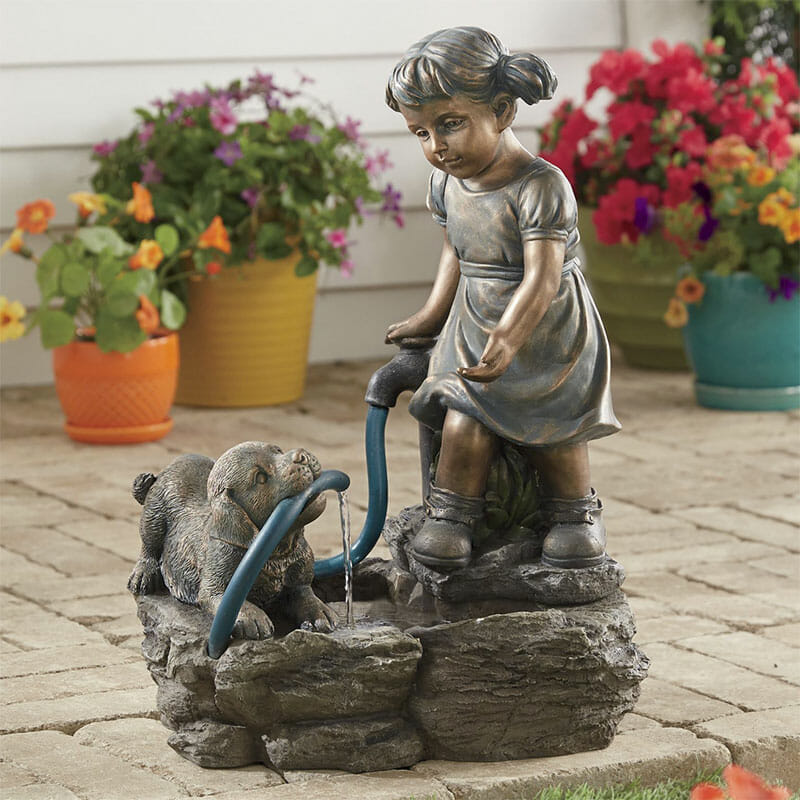
Water Fountains to Add Beauty to Your Garden
It can be easy to spend the majority of time decorating your garden with flowering blooms, charming sculptures, and trailing vines. Take a moment to consider adding the special touch of a garden fountain to your backyard paradise. The relaxing sound of trickling water can easily be added to any outdoor area with today’s fountains. Watch it transform an ordinary garden into a magical oasis with the gentle sound of flowing water.
Bubbling Fountains
Gentle bubbling cascading fountains are the most commonly seen in gardens due to their versatility and easy to place size. Look for these types of fountains in a myriad of styles from barrel fountains, to glazed pots to stone planters. A bubbling fountain can look right at home amongst your other garden decorations.
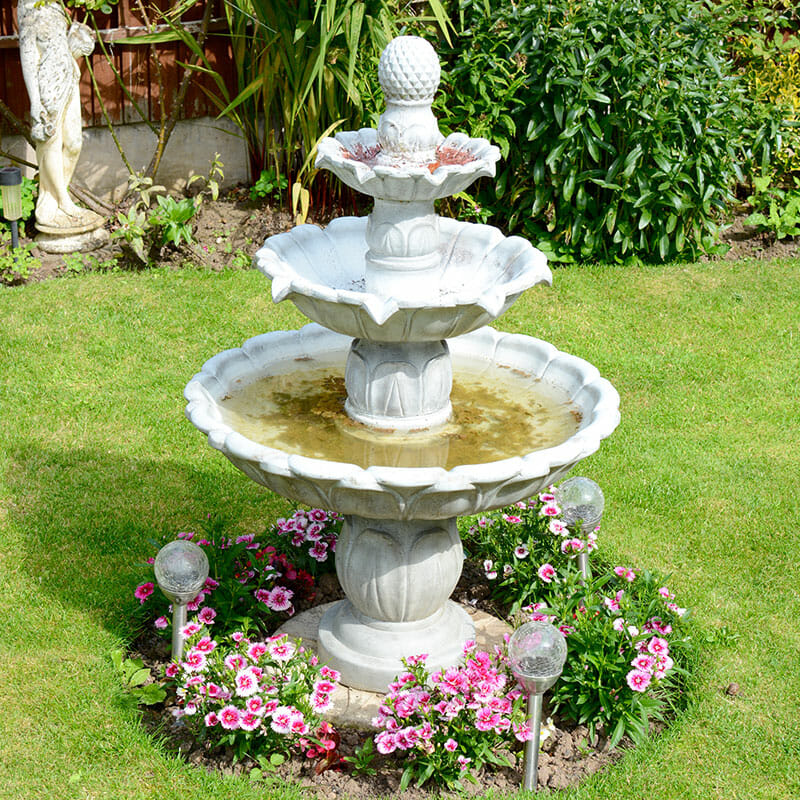
Tiered Fountains
Also known as spilling fountains, this style has endured in popularity for hundreds of years. It lends itself to being the centerpiece of your garden and can take a little more work to design and maintain depending on how ornate you would like it to be. It can be as simple as a pedestal stand-alone style, or as grand as a large pool with multiple tiers. Keep in mind that these kinds of fountains will deliver more vigorous water sound, the bigger they are.
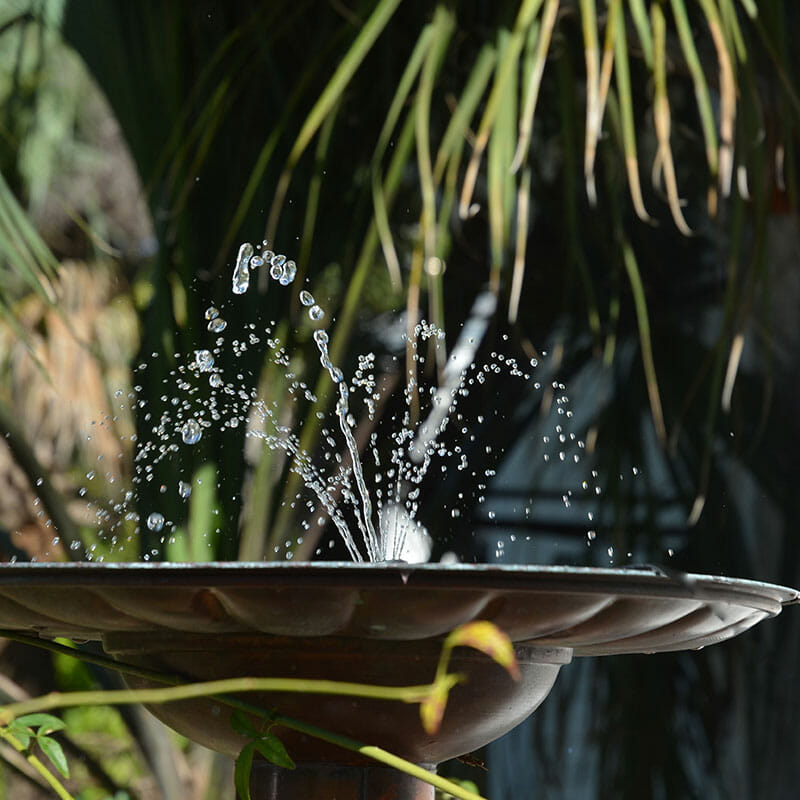
Solar Garden Fountains
These types of fountains have the versatility of going anywhere without being restricted to an electric source. Many solar fountains have a long solar cord that can be placed in a sunny location even when you place the fountain in a shaded area. There are many style options to choose from and can make designing your garden an easy and enjoyable exercise.
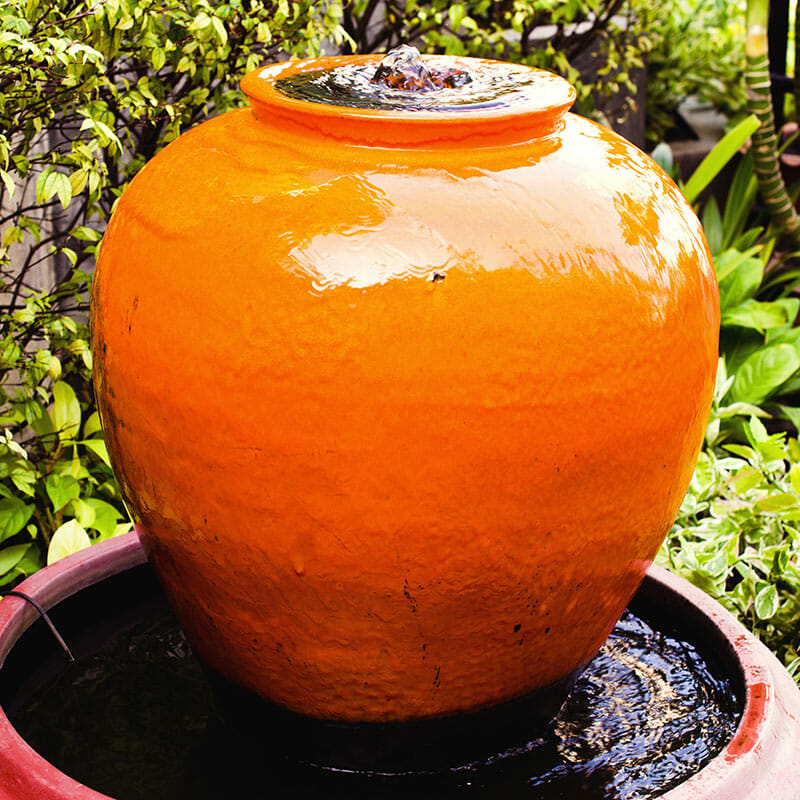
Disappearing Fountain
These types of fountains seem to disappear into the space around them. The water reservoir is hidden beneath the ground out of sight, so there is no open pond or basin, making it a good choice whenever there are small children around. It is particularly easy to care for since water doesn’t pool, algae doesn’t grow and there is no place for dirt or leaves to accumulate.

Wall Fountain
Small spaces, such as courtyards or entryways, are ideal places for a wall fountain. Choose one that fits nicely on the wall space you have available. Usually, there are options that are either freestanding or mounted. Either way, it can be lovely to add the relaxing sound of water in a small space. Add an outdoor accent light to spotlight your wall fountain in the evening for a beautiful effect.
Regardless of the water fountain design you choose, you’ll be adding the relaxing sound of moving water into your backyard garden sanctuary.
Find Inspiration In These Gardening for Small Spaces Ideas
You don’t have to have a sprawling yard to enjoy the beauty of a garden. Let these small gardens provide inspiration no matter what space you have available. Go ahead, channel your inner gardener and dig in the dirt!
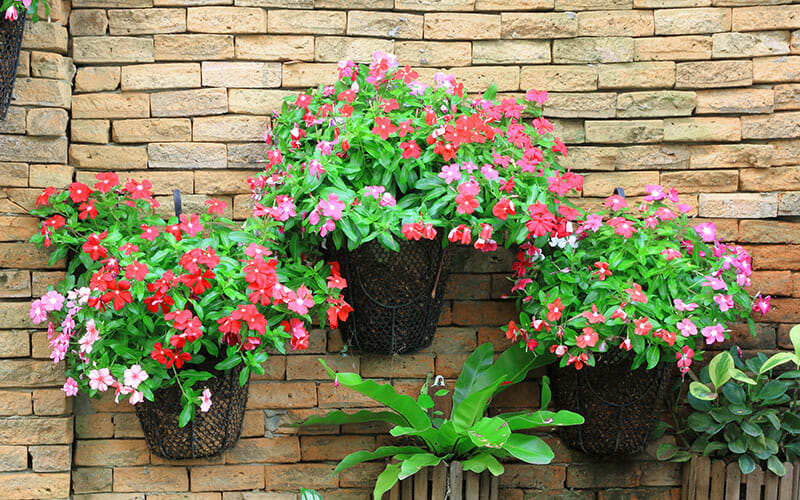
Hanging Garden Ideas
When you don’t have any room in your footprint to add a garden, then it’s time to get the hang of it. Hanging baskets come in a variety of sizes and styles. Hang several in sunny windows throughout your home. Keep a hanging herb garden in the kitchen so it’s handy to snip a few herbs into your dinner’s entrée. Hanging glass terrariums can be visual masterpieces that are stunning to look at and serve double duty as an accent to your room.
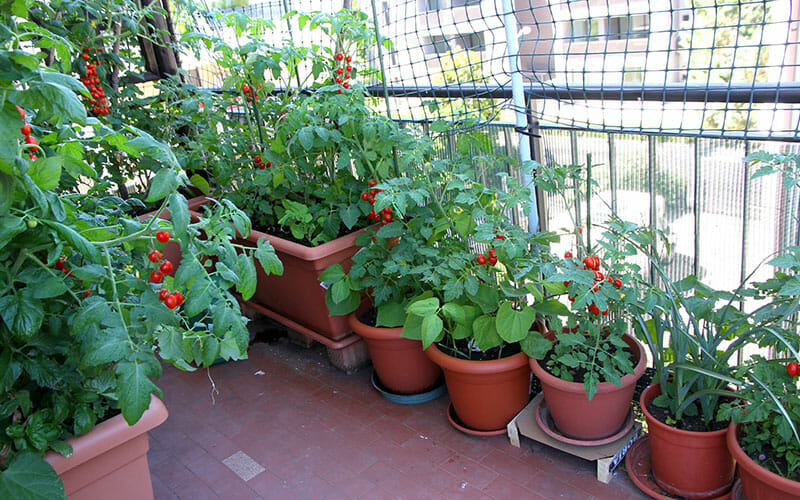
Patio Gardens
No matter how big your patio may be, a raised planter box or two may be all you need to add the beauty of a seasonal garden to your outdoor space. Dedicate one container to a selection of lettuce and salad greens. Let flowers bloom in another one. The beauty of planter boxes allows you to satisfy whatever kind of garden just on a smaller scale.
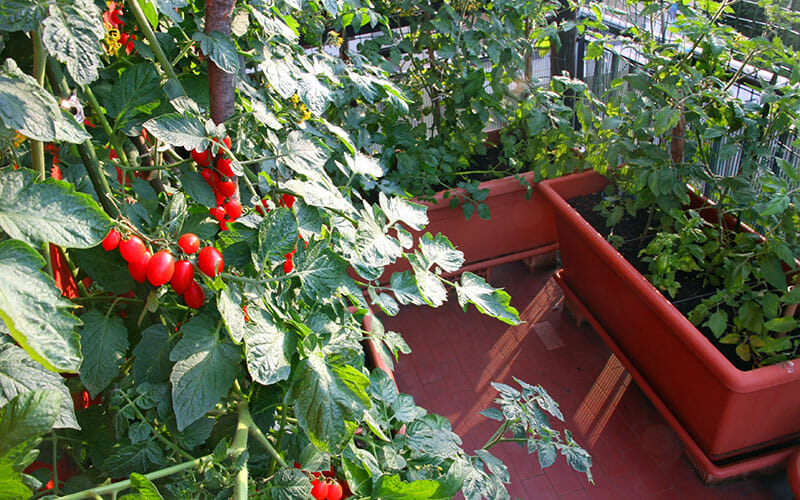
Rooftop Garden
If apartment living sends you to the roof for your gardening opportunity, then embrace this unique location. Choose hearty plants that can stand up to relentless sunlight, rain and winds. Solar garden décor adds a nice touch and with all the sun of a rooftop garden, is well-fueled to shine all evening long.

Small Space Vegetable Gardening
Even the smallest of spaces can produce a bounty of veggies, so if you yearn to add fresh ingredients right from your own garden to your table, then start with a raised garden bed and a patch of full sun. No room in the back yard for a garden? A container garden on the front porch may be your best option. Chose a mix of plants that tolerate sun and shade to give you more options. Ask your local garden store for advice on which plants make good garden mates. Group your containers in groups of three to create a homey, mini garden look. Dress up your porch garden with little seasonal accents like a whimsical solar snail, a new welcome mat or strategically placed a wind chime to bring music to your ears.
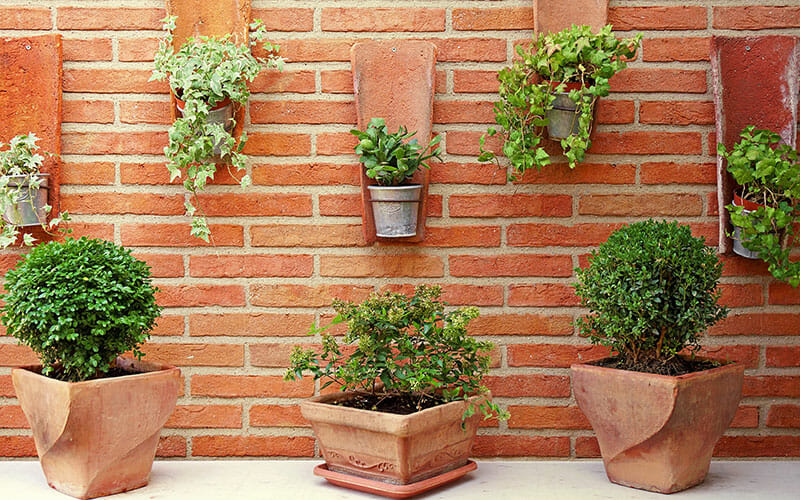
Vertical Garden
If your patio, fence or back porch has more wall space than square footage, then consider going vertical with your gardening aspirations. Hang baskets on a wall, or transform an interesting piece of wall art, like a shutter or garden gate, and use it as a foundation to create pockets for small plants. Partner up a garden trellis with a garden container and choose plants that like to aim high, like climbing roses, ivy or hydrangea, then watch your garden reach for the sky. Add outdoor hanging lights for an ethereal effect.
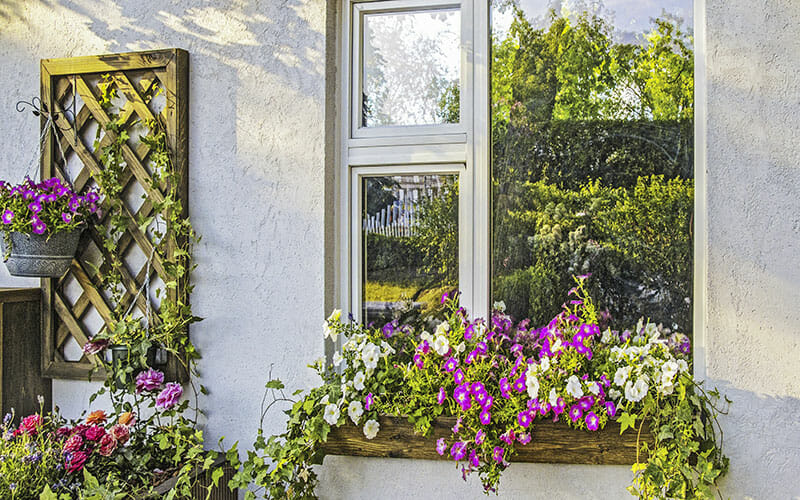
Window Garden Ideas
Whether you have a bay window that soaks up the sun like its own mini greenroom, or you just happen to have a spare window ledge that gets some good natural light, a window garden can provide the perfect locale to add greenery or blooms in an eclectic mix of garden pots or in a single long window box. Try a different approach and fill a window box with easy maintenance succulents for a gorgeous look.
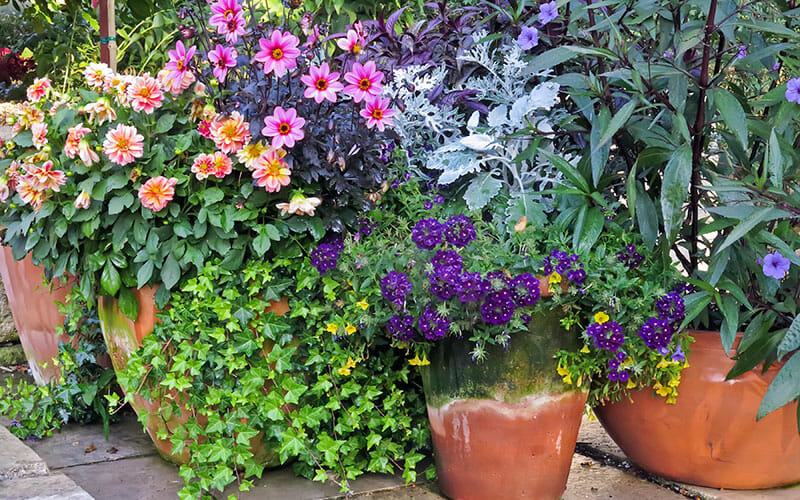
Container Gardening Basics
Container gardening is not only beautiful, but it saves space with visual attractions that never fail to grab attention. You don’t need a lot of experience or a plot of land to make your own little garden project. Just a few containers will get you started with growing no matter how much, or little, space you might have. Container gardening is one of the fastest and easiest gardening forms to learn. Whether flowers, veggies or herbs are in your sights, these handy tips will help your diy container garden flourish.
Container Selection Is Key
Get started on the right foot with the right garden planter for your plants. There are many artful styles and options for containers. From whimsical and bold to botanical beauties and eye-catching textures, container pots offer a wealth of possibilities before you even plant a single bloom.
Plastic containers are not meant for the long haul, while terracotta or clay pots often require more watering. Take a look around your home to see if there are any containers that could be transformed into your new container garden, like an old wheelbarrow or bucket. Be sure to thoroughly scrub all your pots and rinse well before planting.
After selecting the design, the next step is to choose the best locations for your garden. Be sure to measure the specific area the containers will occupy, so you’ll fill it up with the right number of containers.
Pick a container that has drainage holes. If you have a decorative planter that doesn’t have drainage holes, plant your flowers first in an inexpensive pot that has drainage, and sit it on top of a little gravel in your decorative planter. Fill planters with one to two inches of sandy or vermiculite base before adding rich potting soil just under two inches from the rim of the container.
If you are particularly crafty or artistic, you can also add some hand painting to porous-sided containers. Just make sure the paint is weatherproof or sealed to hold up to moisture and dirt.
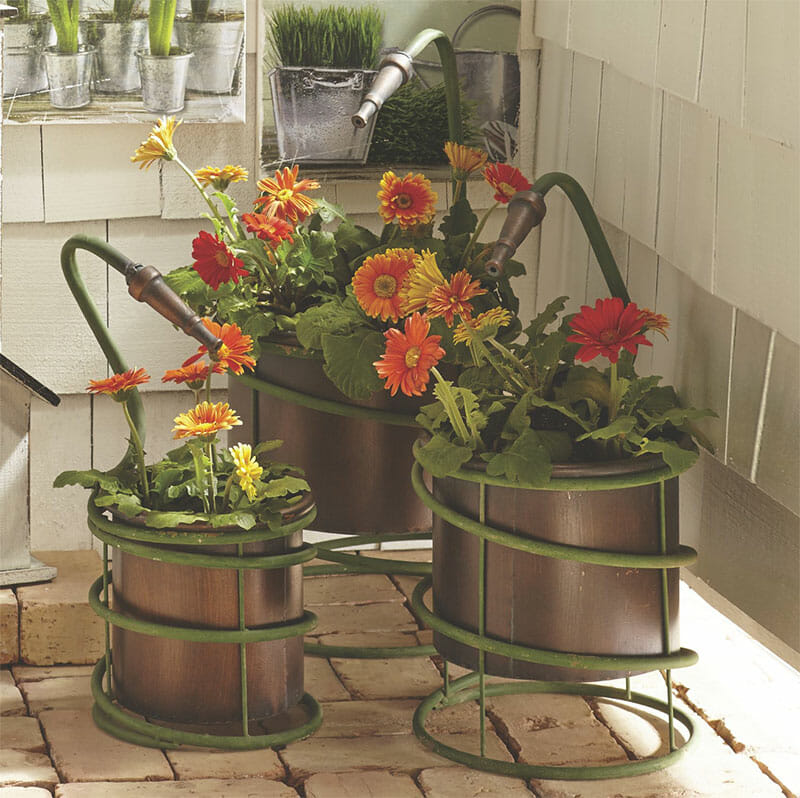
Get Garden Plants Organized
Do a little research and make sure you combine plants according to their needs. Some plants need full sun; others prefer shade and extra water. Making sure that your plants will thrive together ahead of time will save you headaches later on. Also think from the outside in, planting taller ones in the middles and placing shorter and trailing plants along the outside edges.
Choose flowers like geraniums, ivy, marigolds, petunias, sweet potato vine, vinca, gerbera daises for outdoor container gardens. Bulb plants like tulips, cannas, and gladiola are also ideal. Check the instructions for each flower species to be sure to select the best container. Keep size, shape, and depth in mind when choosing containers relative to the needs of each plant species. For plants with exceptionally long roots that love to spread out in the soil, six to eight-inch depth and twelve to eighteen inch high, conical-shaped containers are best. Short, squatty containers are more suited to flowers with short roots. If you need a little design inspiration, visit your local garden center. Use their pre‐planted containers for ideas and visualize how the plants will grow together.
Think Ground Up
A container garden only has one way to get nutrients, from you! Start with a packaged potting mix for perfectly mixed soil that is ready for planting. Also, look into natural fertilizers that can help build organic content and keep soil from losing its nutrients. Ask your local nursery for advice on the right kind of fertilizer and potting mixes for your chosen plants.
Water Plenty
Container plants often need to be watered more often than a regular garden, especially in dry climates or in high temperatures. Get in the habit of watering every day and water enough so that it drains out of the drainage holes at the bottom of your pot. Heading out on vacation? Be sure to have someone water your plants while you’re gone!
Stay on the Move
As the weather changes, you might find that rotating your containers and potted plants to different areas of your patio help to capture changing light and give equal time to every side of your blossoming creations.
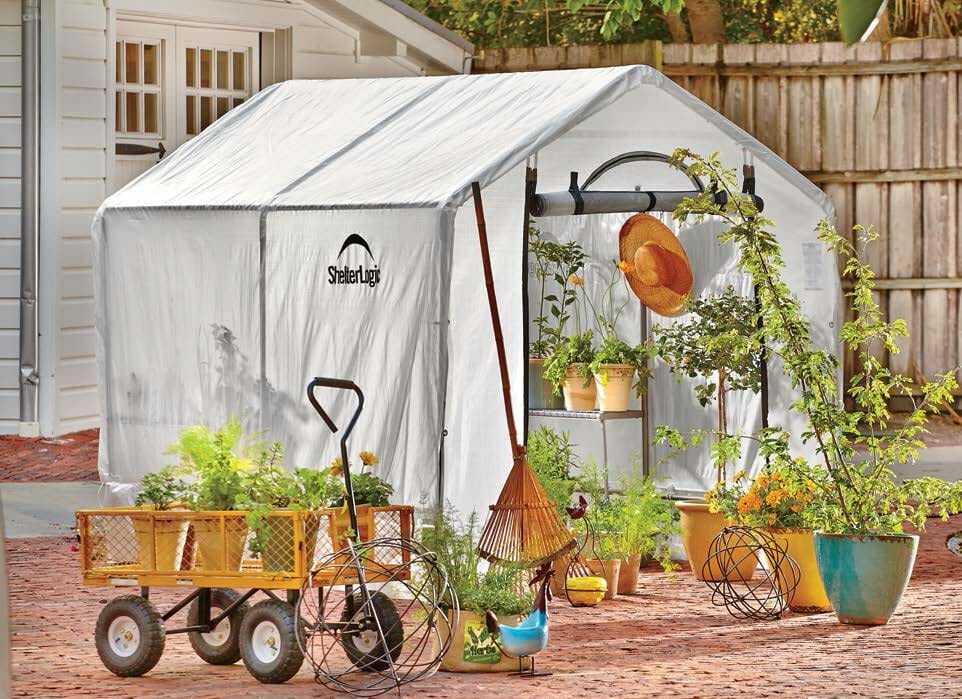
Extra Gardening Tips & Tricks
Finally, we share several of our favorite garden ideas to set your outdoor sanctuary apart from the rest.
- A small garden shed makes for easy access to the tools and supplies stored on the wall. Look for ways to incorporate your shed into your landscape. Decorate around the shed with flowers, whimsical sculptures and a flagstone path leading up to the door.
- Consider using cement paving stones or bricks to create pathways in and around your garden. Visitors can meander among your various plant beds with ease.
- Before planting any new permanent young tree in your yard, carefully consider the expected shape and size during maturity; by taking space and height issues into account now, you might choose a more easily maintained dwarf variety instead.
- Umbrellas provide sun protection with style. This is a perfect way to provide shade with a splash of color for your outdoor living space.
- Add a charming garden bridge over a pond, small streams or rock beds that grace your garden area. Even just adding an archway from one plant bed to another adds a beautiful element.
- Don’t overlook the power of tiny fragrant tea roses to lend elegance to gardens. You can train them to grow decoratively along fence posts, garden gates, and trellises. And the aroma is wonderful!
- Cover uneven patches of ground using an attractive combination of closely planted, colorful irises; these hardy, bulb-based plants will naturally expand over the course of time to fill in small depressions with bright floral beauty.
- Lend a decorating eye to your outdoor space like you would with your inside space. Decorate with outdoor plaques and signs, sculptures, outdoor chandeliers, and indoor/outdoor area rugs.
- Remember to check the reproductive requirements of new fruit and berry plants added to the yard each year. Some, such as some popular grapevines, won’t bear fruit unless other vines of the same species and opposite sex grow nearby.
- Use elevated plant beds to reduce the strain on back muscles and knees during weeding and cultivation; many manufacturers today offer convenient prefabricated raised bedding systems to ease gardening tasks for seniors.
- In a large garden, try interspersing fragrant blossoms, such as lilac, honeysuckle, mock orange or lavender, with other less aromatic varieties, in order to create an inviting, lingering garden scent.
- Watermelons, cantaloupes, and squash grow easily in mound arrangements; simply add fertilizer to mounded earth, and add three to four seeds to each small hill.
- Don’t overlook the power of small flowering plants, such as buttercups, to create attractive contrast edging around larger floral plantings.
- Add solar-powered lights at carefully selected points to attractively outline a garden bed at night, without stressing young plants.
- Set-up an outdoor sink in your yard or on a patio to keep the dirt outdoors where it belongs.

